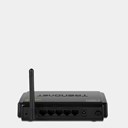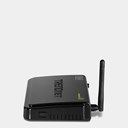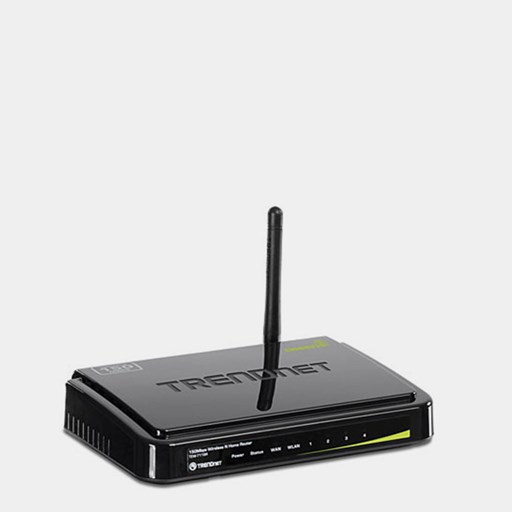TRENDnet's N150 Wireless Home Router, model TEW-711BR, provides reliable 150Mbps wireless n speed and coverage to share files, play games, and surf the Internet.
WMM® Quality of Service (QoS) technology prioritizes gaming, Internet calls, and video streams. Wi-Fi Protected Setup (WPS) connects other WPS supported wireless adapters at the touch of a button. LEDs on the front of the router convey device status. Network wired devices to the four Fast Ethernet ports on the back of the router.
| Product Type | Wireless Router |
| Standards | IEEE 802.3 (10BASE-T), IEEE 802.3u (100BASE-TX), IEEE 802.11b, ; IEEE 802.11g, Based on IEEE 802.11n technology, IEEE 802.3az |
| Wireless Technology | Internet Access Control : MAC Address Filter, Domain/URL Filter, Protocol/IP Filter, Virtual Server, DMZ host, UPnP, PPTP/L2TP/IPsec VPN pass through |
| Frequency | 2.412 ~ 2.484 GHz ISM band |
| WAN | 1 x 10/100Mbps Auto-MDIX WAN port (Internet) |
| LAN | 4 x 10/100Mbps Auto-MDIX LAN ports |
| Buttons | On/Off power switch |
| Connection | Dynamic IP, Static (fixed) IP, PPPoE, PPTP, L2TP |
| Infrastructure Management | Local/remote configuration, upgrade firmware, Backup/Restore configuration via Web browser, Internal System Log, Syslog, E-Mail Logging, SNMPv1/v2c, Ping Test Tool, Dynamic DNS |
| Routing | Static and Dynamic RIPv1/2 |
| Encryption | 64/128-bit WEP (HEX/ASCII), WPA /WPA2-PSK, WPA/WPA2-RADIUS |
| LED Indicator | Power, Status, LAN1 - LAN4, WAN, WLAN |
| Power | 5V DC, 1A external power adapter |
| Power Consumption | 2.8 Watts (max) |
| Environment | Operating: 0° ~ 40°C (32° ~ 104°F) ; Storage: -10°C ~ 70°C (-14° ~ 158°F) ; Humidity : Max. 95% (non-condensing) |
| Antennas | 1 x 2dBi fixed dipole antenna |
| No. of Channels | 1-11 (FCC), 1-13 (ETSI) |
| Weight | 204 g |
| Dimension | (L x W x H) 158 x 109 x 34 mm |
WMM® Quality of Service (QoS) technology prioritizes gaming, Internet calls, and video streams. Wi-Fi Protected Setup (WPS) connects other WPS supported wireless adapters at the touch of a button. LEDs on the front of the router convey device status. Network wired devices to the four Fast Ethernet ports on the back of the router.



